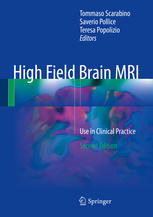

Most ebook files are in PDF format, so you can easily read them using various software such as Foxit Reader or directly on the Google Chrome browser.
Some ebook files are released by publishers in other formats such as .awz, .mobi, .epub, .fb2, etc. You may need to install specific software to read these formats on mobile/PC, such as Calibre.
Please read the tutorial at this link: https://ebookbell.com/faq
We offer FREE conversion to the popular formats you request; however, this may take some time. Therefore, right after payment, please email us, and we will try to provide the service as quickly as possible.
For some exceptional file formats or broken links (if any), please refrain from opening any disputes. Instead, email us first, and we will try to assist within a maximum of 6 hours.
EbookBell Team

4.3
18 reviewsThis richly illustrated book summarizes the state of the art in brain MRI with the 3-Tesla high-field scanner. The aim is to clarify the numerous advantages of using a 3-T high magnetic field MR scanner, especially in terms of sensitivity and specificity. The first section describes techniques for standard MR examination of the brain. Full descriptions are then provided of advanced protocols such as MR angiography, diffusion-weighted imaging (DWI), perfusion-weighted imaging (PWI), MR spectroscopy, MR tractography, and functional imaging. Differences in diagnostic features when performing these examinations at 3 T and at 1.5 T are highlighted. In addition, safety issues relating to the installation and use of a high-field scanner are discussed. The second section then describes and illustrates in detail each of the main clinical applications of 3-T MRI in the human brain: trauma, stroke, white matter disease, Parkinson’s disease, Alzheimer’s disease, brain tumors, inflammatory disease, psychiatric disorders, etc. A final chapter is dedicated to the evaluation of 7-T MRI within both research and potential clinical settings. The book will be a valuable tool for general radiologists, neuroradiologists, trainees, and technicians.